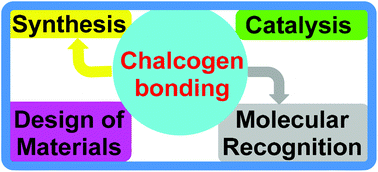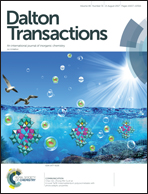Chalcogen bonding in synthesis, catalysis and design of materials
Abstract
Chalcogen bonding is a type of noncovalent interaction in which a covalently bonded chalcogen atom (O, S, Se or Te) acts as an electrophilic species towards a nucleophilic (negative) region(s) in another or in the same molecule. In general, this interaction is strengthened by the presence of an electron-withdrawing group on the electron-acceptor chalcogen atom and upon moving down in the periodic table of elements, from O to Te. Following a short discussion of the phenomenon of chalcogen bonding, this Perspective presents some demonstrative experimental observations in which this bonding is crucial for synthetic transformations, crystal engineering, catalysis and design of materials as synthons/tectons.

- This article is part of the themed collections: 1st International Conference on Noncovalent Interactions and 2017 Frontier and Perspective articles


 Please wait while we load your content...
Please wait while we load your content...